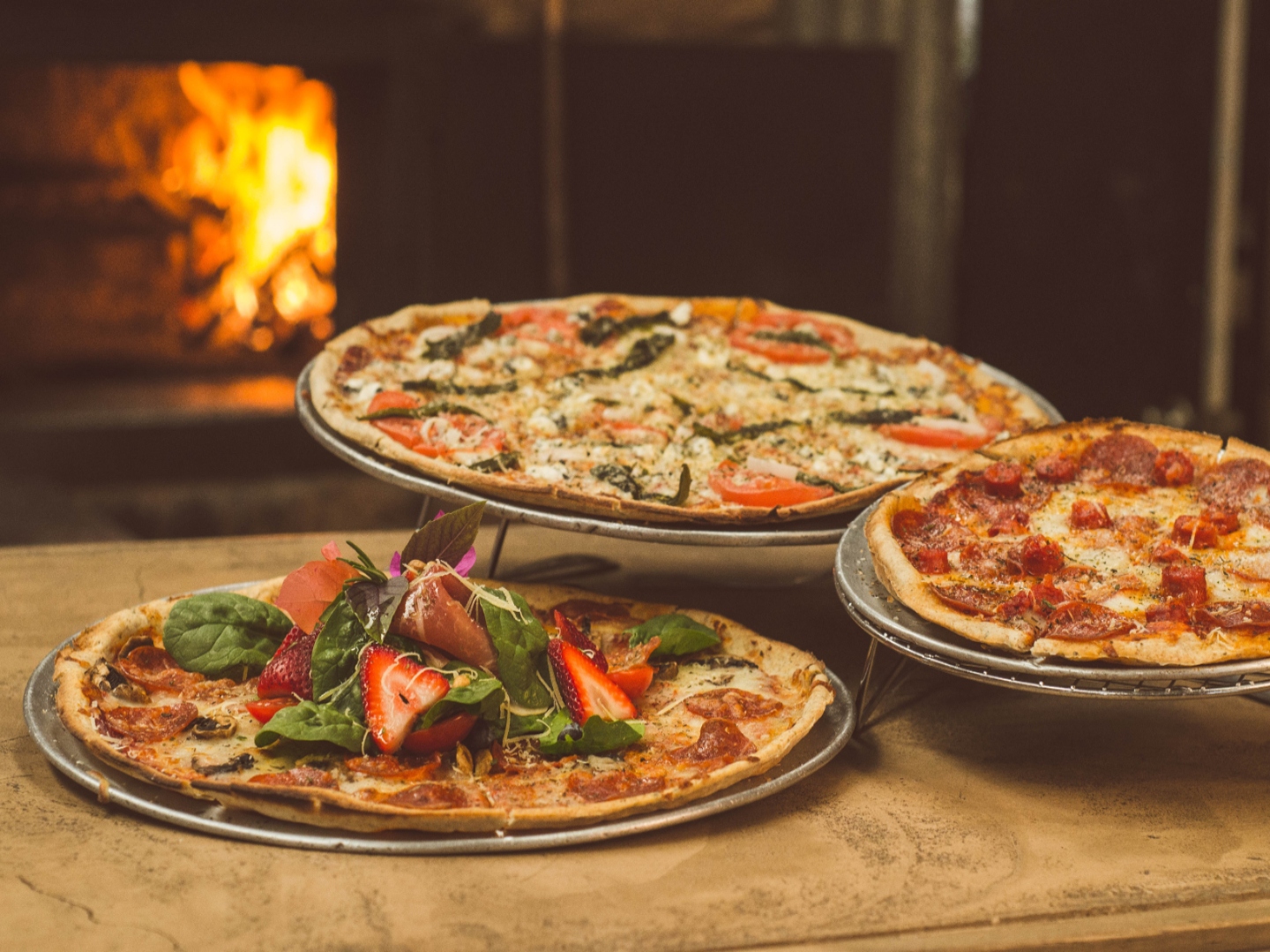
Consumers consistently tell researchers that they plan to eat a healthier diet. But busy schedules get in the way. Many days, they have time to make a salad or put together a sandwich consisting of whole grain bread and lean meats. On other days, they turn to a U.S. favorite: pizza. Such is our love of pizza that the market is valued at $46.6 billion in 2022. Here’s what consumers love about the U.S. pizza market and how your clients can benefit.
U.S. Pizza Market
Pizzerias
Over half of the country’s 77,000 pizza shops are independently owned but they generate only about 40% of total revenue. The average sales volume for a pizzeria is $700,000 but small independently owned units likely generate $600,000 or below, while national brands supported by strong ad campaigns can boast annual revenue that exceeds $1 million.
Some consumers will only eat pizza produced by their favorite chain restaurants. Research shows that Papa John’s continues to outsell other well-known chains like Domino’s, Little Caesars and Pizza Hut. Pizza remains an affordable option for feeding the family. Last year, the typical sales at Little Caesars amounted to $18, while people paid $33 for their meal at Pizza Hut. Increasingly, pizza is a meal enjoyed at home. Consumers appreciate having their meal delivered but ongoing labor shortages have spurred some chains to promote discounts when patrons pick up their food.
In addition, pizza restaurants are scrambling to improve technology for both preparing and delivering pizza. Some chains are proudly touting their use of robots in their kitchens and for delivery.
The Frozen Competitor
Pizza shops also face increased competition from frozen products. U.S. consumers spend about $5.8 billion a year on this category. Consumers indicate specific interest in pizza products with
- All-natural ingredients 44%
- More vegetables 41%
- Low fat 30%
- Low carb 29%
- High product 28%
One bright spot in the frozen pizza market has been crusts made from a variety of healthier sources such as cauliflower and chickpeas. 63% of consumers buy frozen pizza from the grocery store. They also purchase take-and-bake pizza (43%) and pre-cooked pizza crusts (32%). Their primary reasons for making these purchases include ease of preparation (63%) and speed (61%).
Pizza Industry Challenges
As the cost and availability of labor continues to be a key challenge for pizza shops, owners are joining forced with third-party delivery services. About 24% of deliveries are now handled by third party services. And 34% of consumers between the ages of 18 and 34 use this option. However, some of these service providers may eat into pizzeria profitability.
Pizza Industry Opportunities
Competitors to traditional pizzerias continue to appear. To attract business, independent operators must differentiate especially through the product they offer. Alternative cheeses have become popular toppings, along with flavorings reminiscent of Thai and Middle Eastern cuisine.
Consumers are always looking for something new to satisfy their pizza obsession. About 40% of U.S. adults eat a slide or two on a regular basis. No pizza shop can succeed without a successful promotion strategy. To understand which advertising formats connect best with Pizza Lovers, check out the AudienceSCAN report available at AdMall by SalesFuel.
[Sources: Trending Now: Pizza Insights. Venturafoods.com. 14 Jul. 2022. Web. Aug. 2022; Finkel, Ed. A modest melt. Ift.org. 1 Mar. 2022. Web. Aug. 2022; Putting the Pizza Industry into Perspective. Aaronallen.com. 2021. Web. Aug. 2022; Perri, Janine. Domino’s grabs the biggest slice. Secondmeasure.com. 8 Mar. 2022. Web. Aug. 2022; Pizza Power Report. Pmq.com. 2022. Web. Aug. 2022]Photo by Narda Yescas on Pexels.
